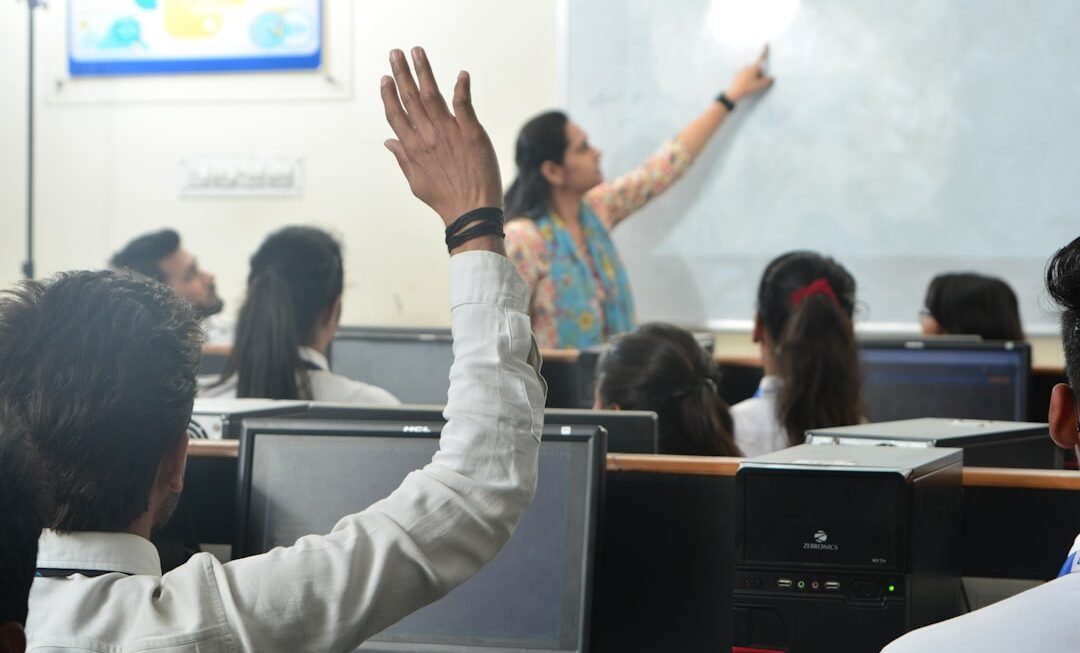The landscape of education in Southeast Asia has undergone a significant transformation in recent years, primarily driven by the rapid advancement of technology and the increasing accessibility of the internet. The COVID-19 pandemic acted as a catalyst, accelerating the adoption of online teaching methods across the region. Countries such as Indonesia, Malaysia, Thailand, and the Philippines have witnessed a surge in online learning platforms, with educational institutions pivoting to virtual classrooms almost overnight.
This shift has not only changed how students receive instruction but has also opened up new avenues for educators to reach diverse populations. In addition to the pandemic’s influence, the rise of online teaching in Southeast Asia can be attributed to several socio-economic factors. The region is characterized by a young and tech-savvy population that is increasingly comfortable with digital tools.
According to a report by the International Telecommunication Union (ITU), internet penetration in Southeast Asia reached approximately 70% in 2021, with many young people using smartphones as their primary means of accessing information. This demographic shift has created a fertile ground for online education to flourish, as students seek flexible learning options that fit their lifestyles and aspirations.
Key Takeaways
- Online teaching has seen a significant rise in Southeast Asia, especially in response to the COVID-19 pandemic.
- Advantages of online education include flexibility, accessibility, and the ability to reach a wider audience, while challenges include digital divide and lack of personal interaction.
- Technology has greatly impacted classroom dynamics, allowing for more interactive and engaging learning experiences.
- Innovative teaching methods in online education include gamification, virtual reality, and personalized learning platforms.
- Online teaching plays a crucial role in bridging educational gaps by providing access to quality education for students in remote or underserved areas.
- The future of education in Southeast Asia will likely involve a blend of online and traditional classroom learning, catering to diverse learning needs.
- Ensuring quality education in online teaching requires effective curriculum design, assessment strategies, and support for both students and teachers.
- Teacher training is crucial in online education to equip educators with the necessary skills and knowledge to effectively facilitate online learning.
Advantages and Challenges of Online Education
Online education offers numerous advantages that have contributed to its growing popularity in Southeast Asia. One of the most significant benefits is accessibility. Students from remote or underserved areas can now access quality educational resources and expert instructors without the need to travel long distances.
For instance, a student in a rural village in Vietnam can participate in a live lecture from a professor based in Ho Chi Minh City, thereby bridging geographical barriers that previously hindered educational opportunities. Moreover, online education provides flexibility that traditional classroom settings often lack. Learners can choose when and where to study, allowing them to balance their academic pursuits with work or family responsibilities.
This flexibility is particularly beneficial for adult learners who may be juggling multiple commitments. However, despite these advantages, online education also presents several challenges. One major concern is the digital divide; not all students have equal access to reliable internet connections or devices necessary for online learning.
This disparity can exacerbate existing inequalities in education, leaving some students at a disadvantage. Another challenge is the potential for decreased engagement and motivation among students. In a physical classroom, teachers can employ various strategies to foster interaction and maintain student interest.
In contrast, online environments may lead to feelings of isolation or disengagement, particularly if students are not accustomed to self-directed learning. Educators must find innovative ways to keep students engaged and motivated in virtual settings, which can be a daunting task.
The Impact of Technology on Classroom Dynamics
The integration of technology into education has fundamentally altered classroom dynamics in Southeast Asia. Traditional teaching methods, which often relied heavily on rote memorization and passive learning, are being replaced by more interactive and collaborative approaches facilitated by digital tools. For example, platforms like Google Classroom and Zoom have enabled real-time communication and collaboration among students and teachers, fostering a sense of community even in virtual spaces.
Furthermore, technology has empowered educators to personalize learning experiences for their students. With access to data analytics and learning management systems, teachers can track student progress and tailor their instruction to meet individual needs. This personalized approach not only enhances student engagement but also promotes better learning outcomes.
For instance, adaptive learning technologies can assess a student’s strengths and weaknesses in real-time, providing customized resources that cater to their specific learning pace. However, the reliance on technology also raises questions about the role of educators in this new landscape. As information becomes more readily available online, the teacher’s role is shifting from being a primary source of knowledge to that of a facilitator or guide.
This transition requires educators to develop new skills and adapt their teaching strategies to effectively leverage technology while maintaining meaningful connections with their students.
Innovative Teaching Methods in Online Education
The rise of online education has spurred the development of innovative teaching methods that enhance the learning experience for students across Southeast Asia. One such method is flipped learning, where traditional lecture content is delivered online, allowing classroom time to be used for interactive discussions and hands-on activities.
Gamification is another innovative strategy gaining traction in online education. By incorporating game-like elements into lessons—such as points, badges, and leaderboards—educators can motivate students to engage more deeply with the material. For example, platforms like Kahoot!
allow teachers to create interactive quizzes that make learning fun while reinforcing key concepts. This method not only enhances student engagement but also fosters healthy competition among peers. Moreover, project-based learning (PBL) has found a new home in online education settings.
PBL encourages students to work collaboratively on real-world problems or projects, promoting critical thinking and teamwork skills. In Southeast Asia, educators have successfully implemented PBL by connecting students with local communities or organizations, allowing them to apply their knowledge in meaningful ways while developing essential life skills.
The Role of Online Teaching in Bridging Educational Gaps
Online teaching has emerged as a powerful tool for addressing educational disparities in Southeast Asia. Many regions within these countries face significant challenges related to access and quality of education. By leveraging online platforms, educational institutions can extend their reach beyond urban centers and into rural or marginalized communities where traditional schooling options may be limited.
For instance, initiatives like the “Learn from Home” program in Indonesia have provided free access to online courses for students across the archipelago. This initiative aims to ensure that even those in remote areas can benefit from quality educational resources. Similarly, organizations such as Teach For All have partnered with local governments to implement online teaching solutions that target underserved populations, helping to level the playing field for all learners.
Additionally, online education can facilitate lifelong learning opportunities for adults who may have missed out on formal education during their youth. Many online platforms offer courses tailored specifically for adult learners seeking to upskill or reskill in response to changing job markets. This flexibility allows individuals to pursue education at their own pace while balancing work and family commitments, ultimately contributing to economic growth and social mobility within their communities.
As Southeast Asia continues to embrace online education, the future of learning will likely involve a hybrid model that combines both online and traditional classroom experiences. This blended approach allows educators to harness the strengths of each method while addressing their respective limitations. For instance, while online platforms provide flexibility and accessibility, traditional classrooms offer opportunities for face-to-face interaction and hands-on learning experiences that are difficult to replicate virtually.
In this evolving educational landscape, institutions must remain adaptable and responsive to the needs of their students. As technology continues to advance, new tools and methodologies will emerge that can further enhance the learning experience. For example, virtual reality (VR) and augmented reality (AR) technologies hold great potential for creating immersive learning environments that engage students in ways previously unimaginable.
However, it is essential for educators and policymakers to consider the implications of this shift carefully. While online education offers numerous benefits, it is crucial not to overlook the importance of social interaction and community building that traditional classrooms provide. Striking a balance between these two approaches will be key to ensuring that all students receive a well-rounded education that prepares them for success in an increasingly complex world.
Ensuring Quality Education in Online Teaching
As online education continues to expand in Southeast Asia, ensuring quality remains a paramount concern for educators and institutions alike. The rapid transition to online teaching during the pandemic exposed various challenges related to course design, assessment methods, and student support services. To maintain high standards of education in virtual environments, institutions must prioritize quality assurance measures that address these issues comprehensively.
One effective strategy for ensuring quality is the implementation of rigorous accreditation processes for online programs.
Additionally, institutions should invest in ongoing professional development for educators to equip them with the skills necessary for effective online teaching.
Moreover, student feedback plays a crucial role in maintaining quality education in online settings. Institutions should actively solicit input from learners regarding their experiences with course materials, instructional methods, and support services. By analyzing this feedback and making necessary adjustments, educators can continuously improve their offerings and better meet the needs of their students.
The Importance of Teacher Training in Online Education
The success of online education hinges significantly on the preparedness of educators to navigate this new landscape effectively. Teacher training programs must evolve to equip instructors with the skills needed for successful online teaching. This includes not only technical proficiency with digital tools but also pedagogical strategies tailored specifically for virtual environments.
Professional development initiatives should focus on fostering competencies such as creating engaging multimedia content, facilitating online discussions, and assessing student performance through digital means. Additionally, training programs should emphasize the importance of building rapport with students in virtual settings—a skill that is often overlooked but essential for fostering a supportive learning environment. Furthermore, mentorship programs can play a vital role in supporting teachers as they transition into online education roles.
Experienced educators can provide guidance and share best practices with their peers, helping them navigate challenges and develop effective teaching strategies tailored for digital platforms. By investing in comprehensive teacher training initiatives, educational institutions can ensure that their faculty is well-equipped to deliver high-quality online education that meets the diverse needs of learners across Southeast Asia.












